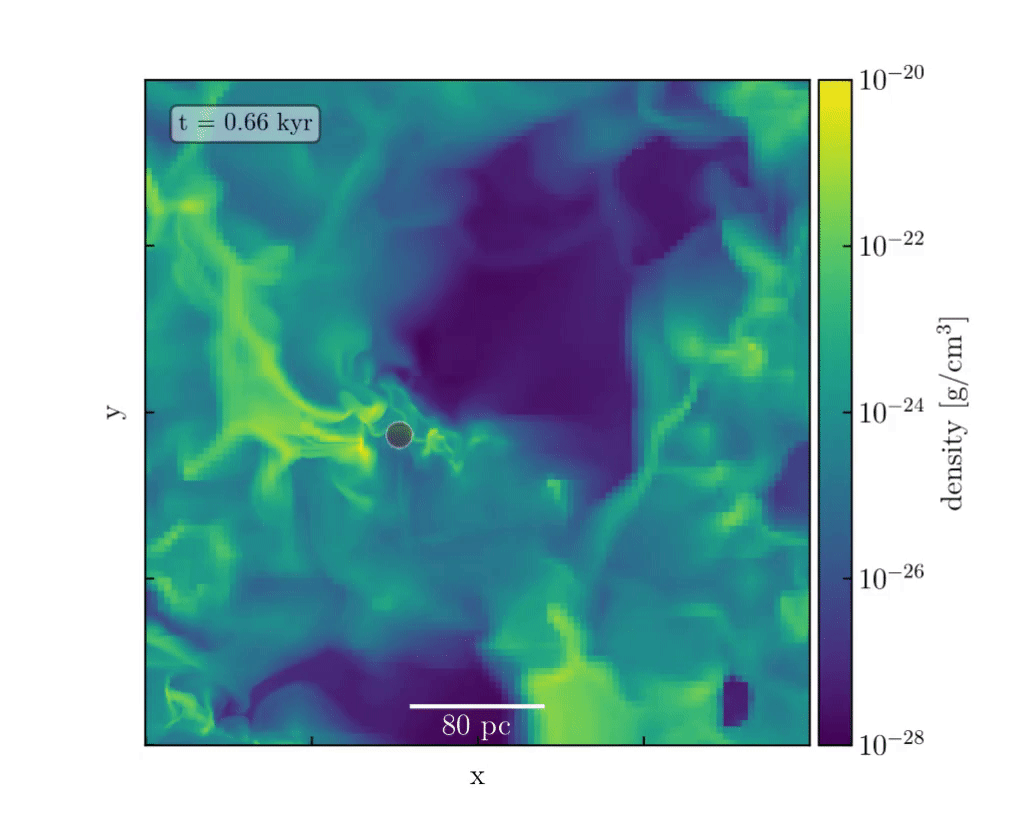Constraining Galactic Transport and Distribution of Radionuclides
Daria Paul
Short-lived radioactive nuclei (with half-life times of less than 1 Myr) affect the formation of planetary systems by heating, as well as ionizing their surrounding medium. The aluminium and iron isotopes 26Al and 60Fe are two such species that are of special interest due to their relatively high abundance. Both nuclides are synthesized in core collapse supernovae and are expelled into the interstellar medium (ISM) in the ensuing blast. 26Al in particular is expected to play a major role in the geological evolution of early planetesimals and their differentiation. Most previous studies based on both 26Al and 60Fe have focused either on their galactic distribution, or their abundance in dense gas during the accretion onto individual stars. However, there is a lack of knowledge about the medium-scale transportation processes of short-lived radionuclides from their site of nucleosynthesis into star forming regions.
In our work, we investigate the intermediate-scale distribution of 26Al and 60Fe, as well as other short-lived radionuclides, by tracing their time evolution in a realistic setup of the ISM. We use the SILCC and SILCC-Zoom simulations that follow the formation of the multi-phase ISM in a supernova-driven stratified galactic disc. The novel “zoom-in” SILCC-Zoom setup allows us to resolve the highly asymmetric sub-structures in the cold, dense, molecular interstellar gas, down to a resolution of ∼ 0.1 pc. We explode supernovae inside this highly turbulent, multi-fractal environment and study the mixing of supernova ejecta into the ISM by tracing its spatial distribution over time.
We find that the fraction of short-lived radioactive isotopes mixed into the dense (n > 100 cm-3) and cold (< 300 K) gas, often assumed to be of the order of unity, is only ∼ 0.25 at maximum and varies significantly over time. This implies that the amount of heating available in protostellar disks could be substantially reduced depending on the time since the last nearby supernova. Given the observed abundances of 26Al, our results could potentially point towards another important source of 26Al in protostellar disks such as high-mass stellar winds or internal production through spallation processes.

